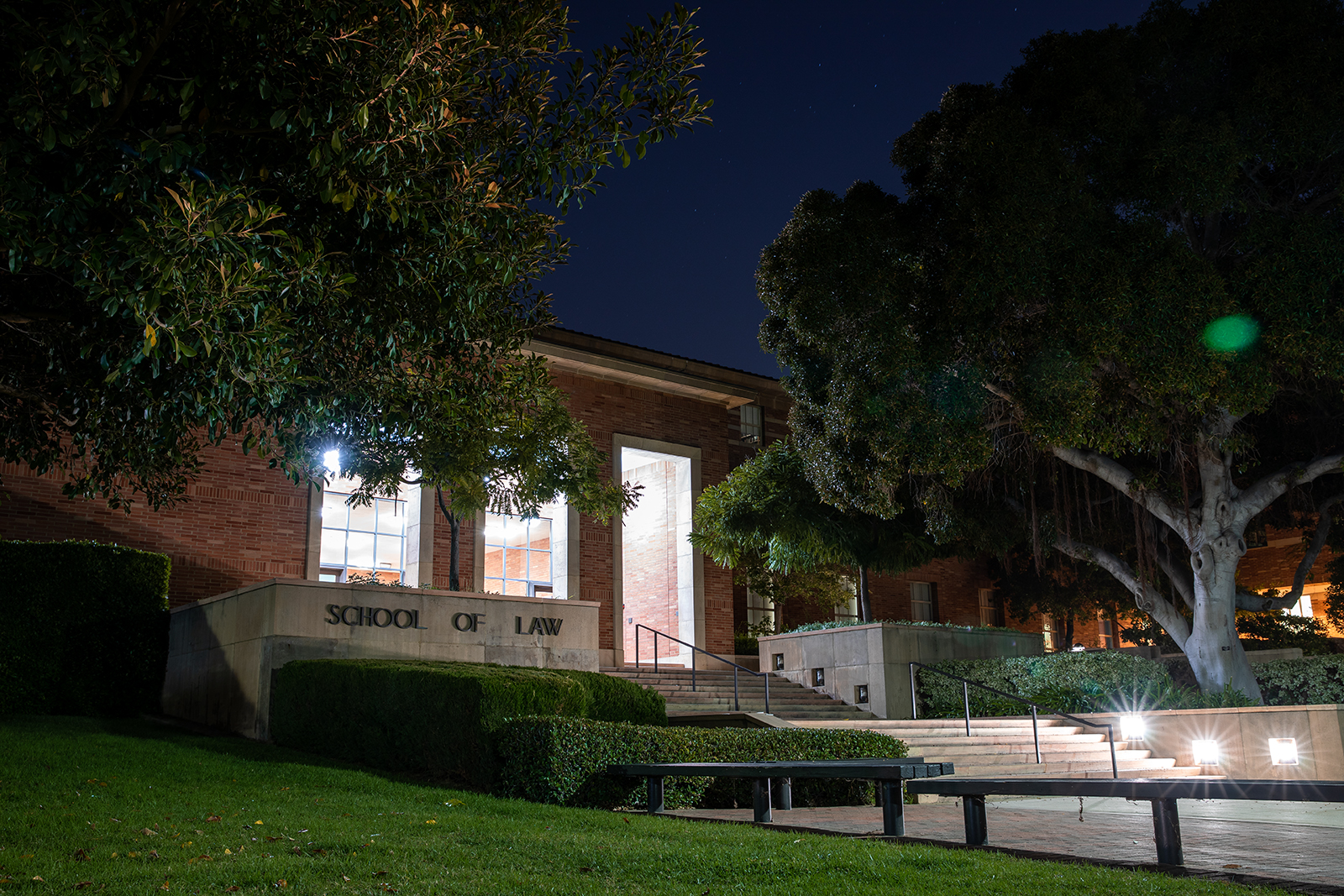School of Law launches project to track data on incarceration facilities, COVID-19

Researchers at the UCLA School of Law started a data project on March 17 to track health conditions in incarceration facilities and efforts to decrease populations in those facilities. The project has since grown and received positive feedback from judges and advocates using the data for related cases. (Tanmay Shankar/Assistant Photo editor)

By Hyeyoon (Alyssa) Choi
April 29, 2020 9:17 p.m.
A UCLA School of Law project is helping judges and advocates respond to the impact of the novel coronavirus in prisons.
Sharon Dolovich, a UCLA School of Law professor and Director of the UCLA Prison Law & Policy Program, founded the UCLA COVID-19 Behind Bars Data Project on March 17 to track health conditions in incarceration facilities and efforts to decrease prison populations during the pandemic.
Since then, the project has grown and received positive feedback from judges using the data to rule on related cases, said Keegan Hawkins, Dolovich’s research assistant and School of Law graduate student.
The initiative includes a mixture of quantitative and qualitative data gathered and managed by collaborators across the country who are tracking daily court orders, prison conditions, visitation policy changes, and confirmed COVID-19 cases and related deaths in prisons by state.
Aaron Littman, the deputy director of the project and Binder Clinical Teaching Fellow at UCLA School of Law, said an exhaustive spreadsheet such as this serves as a cross-fertilizing tool and resource for those currently advocating for and deciding upon the rights of people in prison or jail in the wake of COVID-19.
“Hundreds of advocates, lawyers, government officials and judges have been contacting us,” Littman said. “Requests were coming in from judges around the country who said they’re being confronted with emergency motions and that they needed to know what other courts are doing.”
The project is driven by the belief that a dramatic reduction of the jail population is paramount for public health, Littman said.
Littman said most prisoners do not pose a significant risk to public safety and therefore the public should not be disturbed with decarceration but rather with incarceration.
“Mass incarceration is a disease that kills people too,” Littman said.
A new report released by the American Civil Liberties Union suggests that a failure to consider inmates during the COVID-19 response would double the number of originally predicted national coronavirus-related deaths.
Additionally, the report highlights that incarceration facilities are connected with the outside community. With people such as correctional staff and lawyers frequenting in and out of facilities, the report argues there is a clear linkage between the two communities: A spread in one would lead to a spread in the other.
That connection to outside communities and the viral-conducive nature of overcrowded incarceration facilities, where social distancing is nonviable and access to hygiene is largely absent, can produce fatal repercussions, according to the report.
“Those (incarcerated) in the jail are forced to live in crowded dorms and cells, are not given adequate supplies of soap, masks, and other protective equipment necessary to stop the spread of COVID-19, and are forced to live in conditions that foster the easy transmission of the virus,” said Eric Balaban, a senior staff attorney at the ACLU National Prison Project, in an emailed statement.
As of April 29, there has been one coronavirus-related death of a person incarcerated in California state facilities and at least 214 coronavirus cases. In Los Angeles County jails, at least 68 people in prisons and jails have tested positive with numbers continuing to climb. No deaths have been reported yet.
“The issue here isn’t that we need to build more facilities to incarcerate people,” Littman said. “We need to incarcerate fewer people like virtually any developed country.”
Among developed nations, the United States is an anomaly in its implementation of mass incarceration, according to data from the Vera Institute of Justice, an organization that partners with government officials to improve the justice system.
The U.S. incarceration rate was almost seven times higher than that of other developed countries before the pandemic, and LA County’s rate was more than triple the international average, according to the data. For LA County to meet global standards, its jail population would have to decrease from the current estimate of 11,865 inmates to about 3,500.
“Good steps have been made in the right direction, but not nearly enough has been done,” Littman said.
LA County Sheriff Alex Villanueva has released 25% of the county’s incarcerated population, whom he described as “all the low-hanging fruit” during a press conference on April 14. Essentially, these are nonviolent inmates, ones that Villanueva deemed nonthreatening to public safety.
Villanueva said there is little prospect of more releases, indicating that the overwhelming majority of the remaining people in prisons and jails have committed violent offenses and will not be released.
Ralph Diaz, Secretary for the California Department of Corrections and Rehabilitation, has also released 3,585 inmates from California’s state facilities as of April 14.
Though California’s prison system as a whole is within the Supreme Court-mandated 137.5% population limit, 12 out of 35 of its individual facilities are still operating above that percentage as of April 22, according to CDCR’s weekly population reports.
“The reductions in the jail’s population are not nearly enough to allow the remaining thousands of people who remain jailed to practice social distancing that the CDC has called a cornerstone to prevent transmission of the virus,” Balaban said.
California Gov. Gavin Newsom paused the intake and transfer of inmates into state prisons for 30 days, among other measures, in an executive order on March 24.
Attorneys for people in prisons and jails who found Newsom’s executive order insufficient filed an emergency motion to the federal courts asking CDCR to release certain prisoners who are deemed high-risk to COVID-19, including those aged 65 and over and those with chronic heart and lung diseases.
The emergency motion was ultimately denied by a district judge on April 17. The decision effectively halted further decarceration of state prisons.
“It’s very clear that there is a substantial risk of serious harm to people living in these settings, especially those who are at high risk and have a substantial chance of needing critical care,” Littman said. “Jail officials know it, and they’re not doing nearly enough about it.”
Littman added he thinks living with the coronavirus in incarceration facilities is like an undue death penalty.
“The vast majority of these people were not sentenced to death, and those who were sentenced to death were not sentenced to death from the coronavirus,” Littman said. “They’re at real risk of that happening.”

